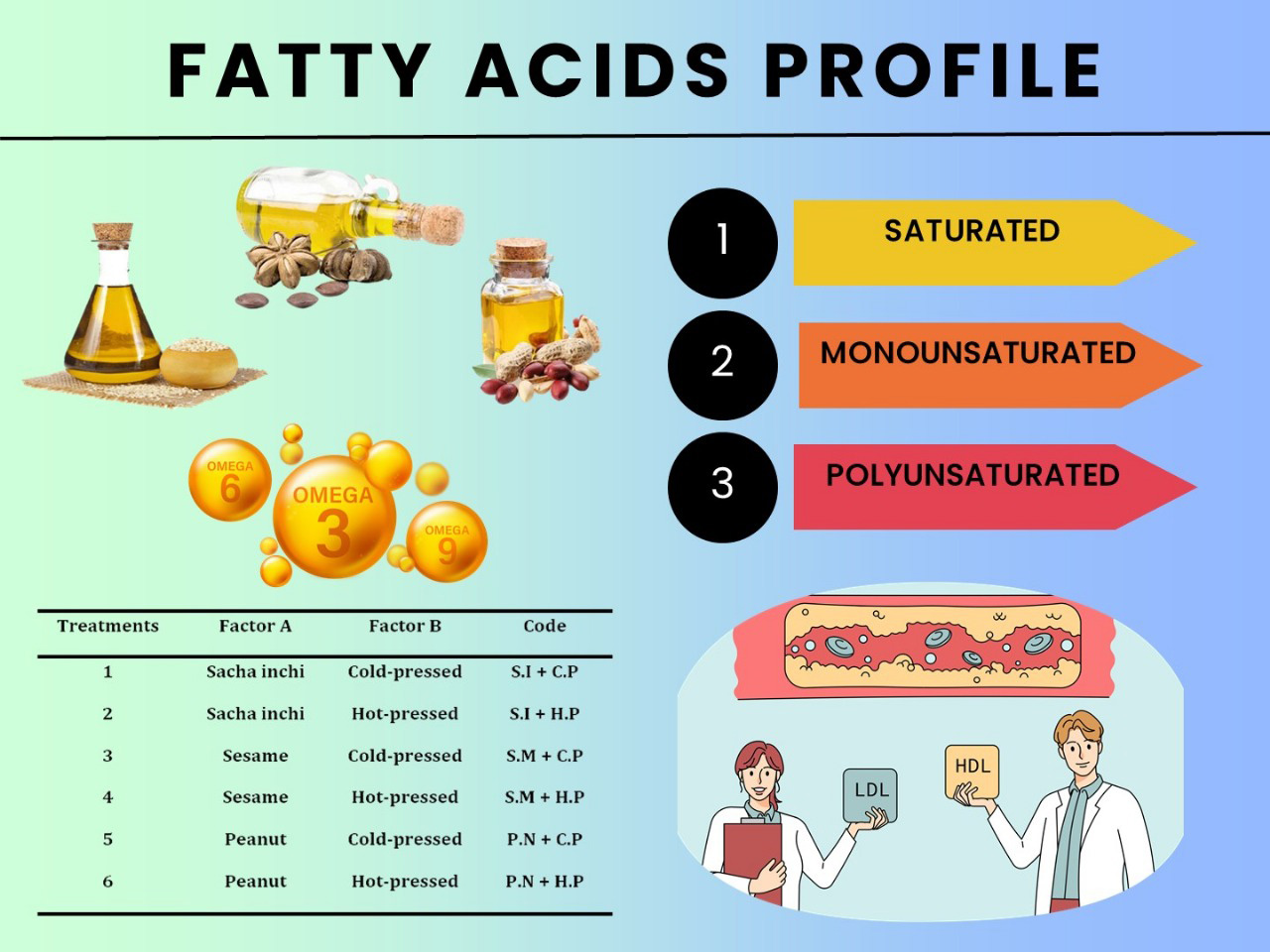Comparison of fatty acid profiles of sacha inchi oil (Plukenetia huayllabambana), sesame oil (Sesamum indicum), and peanut oil (Arachis hypogaea) using two extraction methods for food purposes
Keywords:
fatty acids, agri-food, monounsaturated, polyunsaturated, saturated, oilseedsAbstract

Vegetable oil consumption has increased in recent decades due to the high content of monounsaturated (Omega 9) and polyunsaturated (Omega 3 and 6) fatty acids. For
this reason, this research compared the fatty acid profile of sacha inchi, sesame and peanut oils under two extraction methods for food purposes. A completely randomized experimental design considered an A*B factorial arrangement with 3 repetitions. Factor A corresponds to oilseed type and Factor B is extraction method. The results showed that both factors significantly influenced (p<0.05) bromatological characteristics (pH, acidity, peroxide value, relative density and ash). The lowest concentration of saturated fatty acids was obtained in sacha inchi oil + cold pressing (6.80 g/100 g), while monounsaturated fatty acids increased in peanut oil + hot pressing (51.51 g/100 g). Sacha inchi oil + cold pressing had the highest content of polyunsaturated fatty acids (84.36 g/100 g).
Highlights:
- Comparison of lipid profiles in sacha inchi, sesame, and peanut oils.
- Cold extraction preserves quality, hot extraction increases yield.
- Cold-pressed sacha inchi contains more polyunsaturated fatty acids.
- Hot-pressed peanut is more stable and has lower acidity.
- Sacha inchi provides omega-3, while peanut and sesame are more oxidation-stable.
Downloads

Published
How to Cite
Issue
Section
License
Copyright (c) 2018 Revista de la Facultad de Ciencias Agrarias UNCuyo

This work is licensed under a Creative Commons Attribution-NonCommercial-ShareAlike 3.0 Unported License.
Aquellos autores/as que tengan publicaciones con esta revista, aceptan las Políticas Editoriales.












.jpg)




